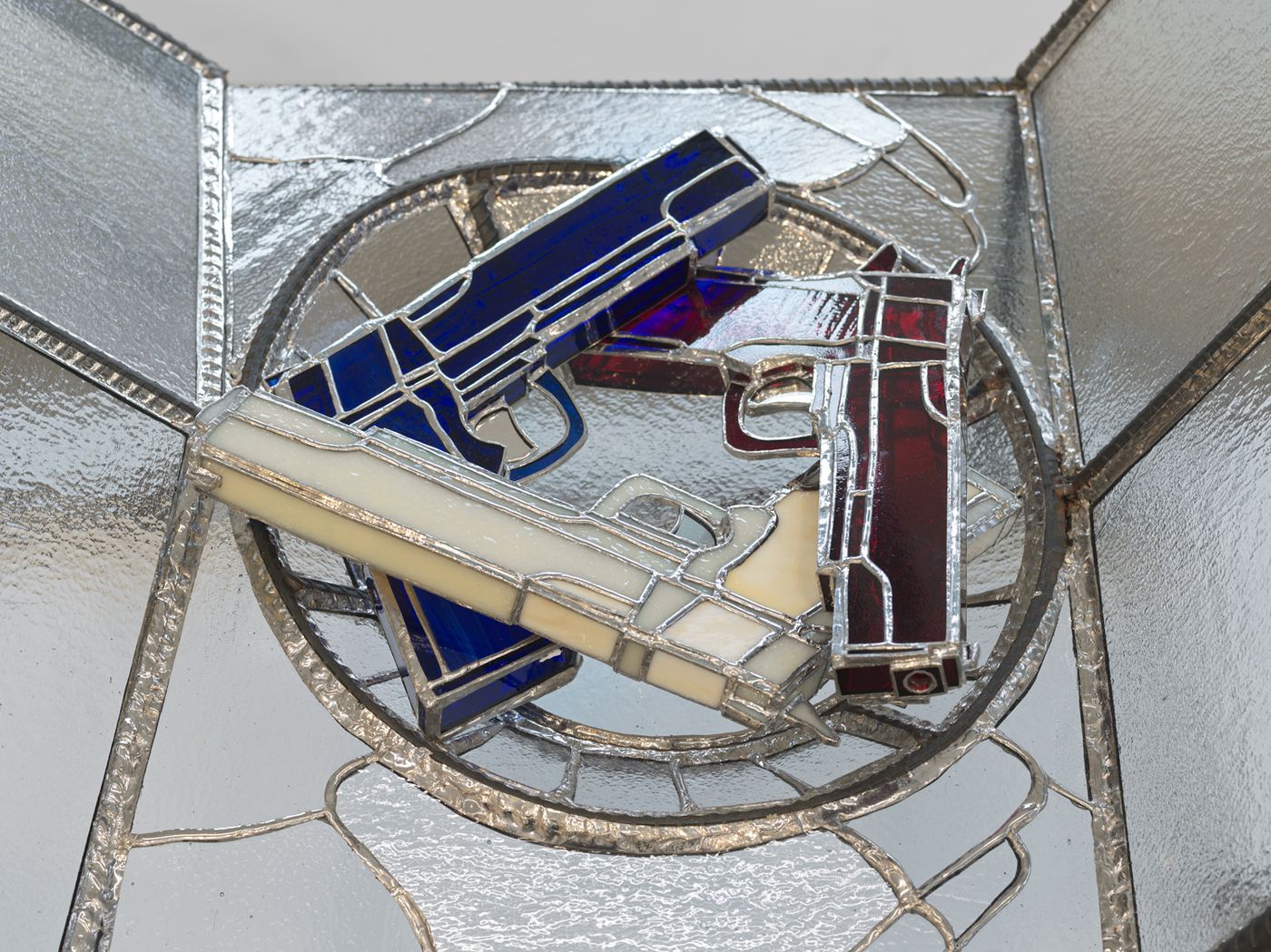
- Press:
- ArteFuse
56 Henry is pleased to present hope against hope, the gallery’s first solo exhibition with Timo Fahler.
“Although [these windows] catch a faint glimpse of the true light, they are nevertheless stretched inwardly so that incorporeal light is captured in images of the corporeal...[it enters] the true seekers who always restrain their perception in humility and, thus, the understanding of contemplation enters their minds.”
-Guillaume Durand, The rationale divinorum officiorum, 1562
Through an exacting practice of slicing, grinding, placing, and soldering, Timo Fahler pieces together historical, mythological, and personal stories. In hope against hope, Fahler specifically draws from pre-Columbian Mesoamerican imagery as source material for his stained-glass sculptures.
Stained-glass is a medium of time. It calls for patience from an artist; in shaping the glass, Fahler coaxes out a gentleness from that which is sharp. The medium exists in a constant state of metamorphosis; its vibrancy, depth, and reflection undulate following the sun’s course each day. In hope against hope, Fahler poses a stereoscopic intervention. In lieu of two-dimensional window works, his stained-glass sculptures project from the wall. On the windowed corner of Henry and Pike Streets, visitors look through a window, at stained-glass.
In Mictlantecuhtli and the dust bowl, Fahler positions the Aztec deity within the Midwest landscape of Oklahoma, his home state. In surfacing ancestral storytelling alongside personal history, Fahler honors, and mines, collective memory to locate jewel-toned hope in the present. Tlaloc, the Aztec deity of rain, is a life giver. A delicate arrangement of skulls at the base of Tlaloc, Chalchiuhtlicue and The Great Flood, however, serves as the exhibition’s memento mori and a reminder that in unleashing floods, withholding rain, or striking lightning, he can also bring forth anguish and suffering. Within Fahler’s cerulean glass panes, contemporary houses and cars swim in freefall, floundering in Tlaloc’s stream of water – another temporal collapse in the exhibition. In Chacmool 2022, the artist ousts the reclining sculpture’s traditional offerings of incense or tobacco in favor of three guns rendered in an American color palette of red, white, and blue. A mask, cast from Fahler’s own face, projects 90 degrees forward. Its mirrored face greets visitors, and tempts them to impress their own faces within, to look through the eyes of Chacmool’s ancient, venerated form themselves.
Taken in crystallized aggregate, Fahler’s new body of work embraces anachronism to highlight affinities between his own Mexican heritage, Mesoamerican history, and our broader sociopolitical landscape. In hoping against hope, Fahler invites us to join him in indulging a radical, mosaicked optimism.
Timo Fahler lives and works between Los Angeles and Amsterdam. He is represented by Sebastian Gladstone Gallery. Fahler received his BFA at the Kansas City Art Institute and his MFA from the University of California Los Angeles. Fahler has held solo exhibitions at galleries including Sebastian Gladstone, New Image Art, Galerie Maximus Oppenheimer, Ibid Gallery, and LAXART. His work was recently acquired by The Los Angeles County Museum of Art.